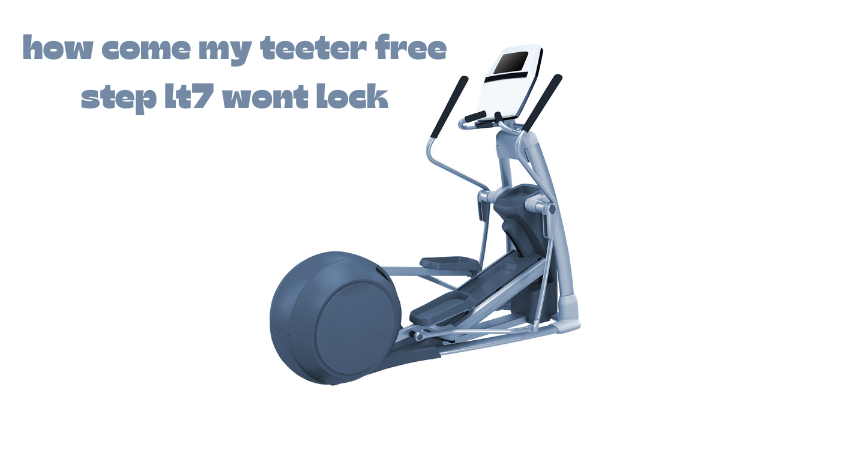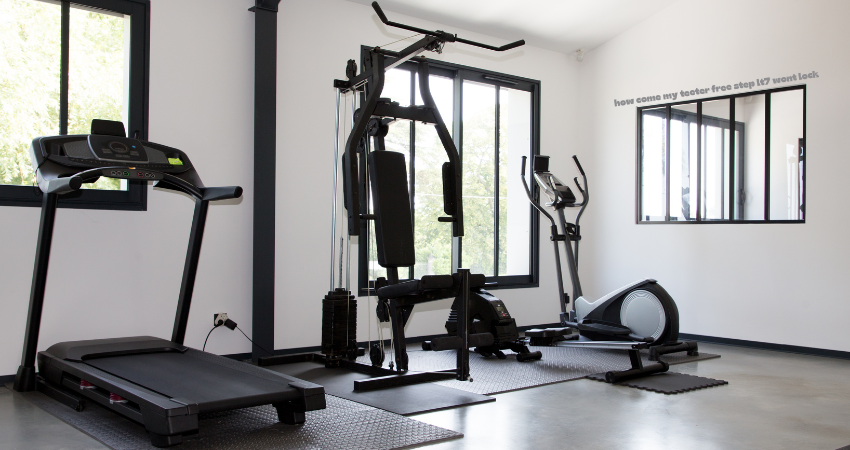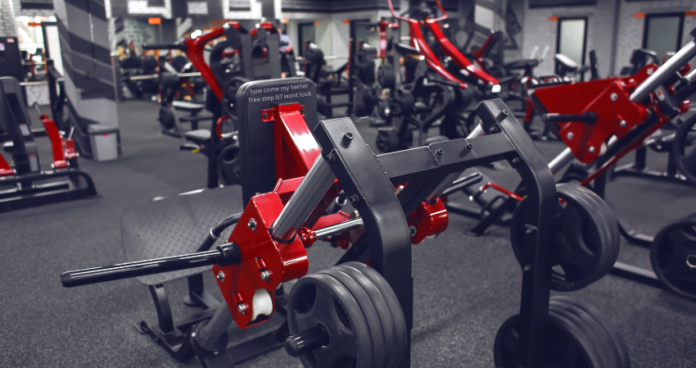Isn’t it strange how we connect with the objects that guide us toward wellness?How come my teeter free step lt7 wont lock isn’t just a machine; it’s an ally, a steadfast companion. So, when it falters, when it won’t lock as it should, frustration quickly rises. You wonder—has something changed? Is it you, or has the machine carried a burden too great? That stubborn lock holds more than metal in place; it holds your trust, your progress, and your sense of security.
Understanding the Locking Mechanism
What does “locking” mean for the Teeter FreeStep LT7?
In its simplest form, locking refers to the safety mechanism designed to keep parts of your machine in place, ensuring smooth, controlled motion. Imagine it like a heart that beats in rhythm, holding together the essential components. When this lock malfunctions, the body—your workout—loses its balance.
Why locking is essential for safety and function
The lock ensures that the Teeter FreeStep LT7 stays stable during your movements. It prevents sudden shifts or dangerous movements that could harm you. The lock isn’t just mechanical; it’s a shield of trust, protecting you from unexpected errors as you push yourself toward new heights.

Possible Reasons for Lock Failure
Mechanical issues: The heart of the problem
Over time, the parts of the how come my teeter free step lt7 wont lock can grow weary, much like a soul burdened by endless tasks. If the locking system fails, it might be because the components that make it up are misaligned or strained.
Misalignment in the mechanism
A gentle shift, too small to notice at first, can create a ripple effect. The mechanism could be slightly out of place, causing the lock to falter. Misalignment doesn’t announce itself loudly—it’s a quiet rebellion that grows over time.
Wear and tear over time
Even the most well-crafted machines suffer the trials of time. The lock might be worn, no longer the steadfast protector it once was. And, just like us, it sometimes needs care to return to its prime.
First Steps to Diagnose the Issue
A gentle inspection of your machine
Pause and examine your Teeter FreeStep LT7. Run your hands along the frame, checking for anything that feels out of place. Is there tension where there shouldn’t be? A looseness where once there was strength? Sometimes, just touching the machine can reveal its secrets.
Listen to your Teeter: Sounds that signal trouble
Machines speak in a language of clicks, clunks, and creaks. If the lock is failing, it may whisper this through sounds you hadn’t noticed before. Pay attention—your LT7 is trying to tell you something.
Checking the alignment and tension
Are the parts of your machine properly aligned? Misalignment can cause the lock to slip. Also, check the tension of the components—too much or too little could disrupt the balance, leading to locking problems.
Common Solutions to Unlock the Mystery
Resetting the mechanism
Sometimes, a simple reset can work wonders. Power off your Teeter FreeStep LT7 and allow it to rest. Rebooting can realign the electronics and mechanics, giving the lock a fresh start.
Re-calibrating the machine
The magic of calibration is like resetting the compass on a ship. Go through the re-calibration steps in the manual, ensuring each part of your machine works in harmony. Recalibration can reawaken your lock’s strength.
Lubrication and maintenance checks
A well-oiled machine is a happy machine. Lack of lubrication could be causing your locking mechanism to stick. Take a moment to apply the recommended lubricant, breathing life back into the gears and bolts that hold your machine together.
When the Problem Persists
When to call for professional help
Sometimes, no matter how much we try to fix things on our own, we need a professional touch. If the lock refuses to cooperate, it might be time to call in a certified Teeter technician to diagnose and repair the deeper issues.
Understanding warranty options
Check if your machine is still under warranty. If so, Teeter may be able to repair or replace parts without cost to you. A warranty is like a promise, standing by you when the unexpected happens.
Keeping your Teeter in good hands: Certified technicians
Trust your machine with those who know it best. A certified technician can ensure that the repairs are done correctly, giving your FreeStep LT7 a second chance at life.
Preventing Future Lock Issues
Regular maintenance routines
Make a habit of caring for your machine the way it cares for you. Regularly inspect and maintain the locking mechanism to prevent future issues. It’s a small act of love for a partner in your fitness journey.
Understanding your machine’s limits
Even machines have their limits. Be mindful of overuse, and recognize when your LT7 needs a break. Pushing it too hard, too fast, could lead to more frequent breakdowns.
Being proactive: Signs to watch out for
Stay alert to subtle changes. If you feel a shift in how your machine operates or notice a new sound, take action early. A little attention now can save frustration later.

Conclusion: Reconnecting with Your Teeter
The journey to fixing the Teeter FreeStep LT7 may not have been what you expected, but it has brought you closer to understanding your machine. This once frustrating issue has become a pathway to reconnecting, to maintaining a tool that helps you achieve your goals. And now, with your lock restored, your workouts will once again flow smoothly, every step forward a testament to your perseverance.
FAQs
How often should I perform maintenance on my FreeStep LT7?
Regular maintenance should be performed every few months, or as recommended by the manufacturer, to keep everything running smoothly.
Can I fix the lock issue myself without professional help?
In some cases, yes! You can try realigning, lubricating, or recalibrating the machine. However, if these steps don’t help, professional assistance might be needed.
What if my machine locks but feels unstable?
An unstable machine could mean misalignment or loose parts. Tightening all connections and checking the balance may solve the problem.
How long does the Teeter FreeStep LT7 usually last before encountering issues?
With proper care, the FreeStep LT7 can last for many years, though wear and tear may appear after extended use.
How can I contact customer support for Teeter products?
You can reach out to Teeter’s customer support through their official website or by phone, with details provided in your product manual.

